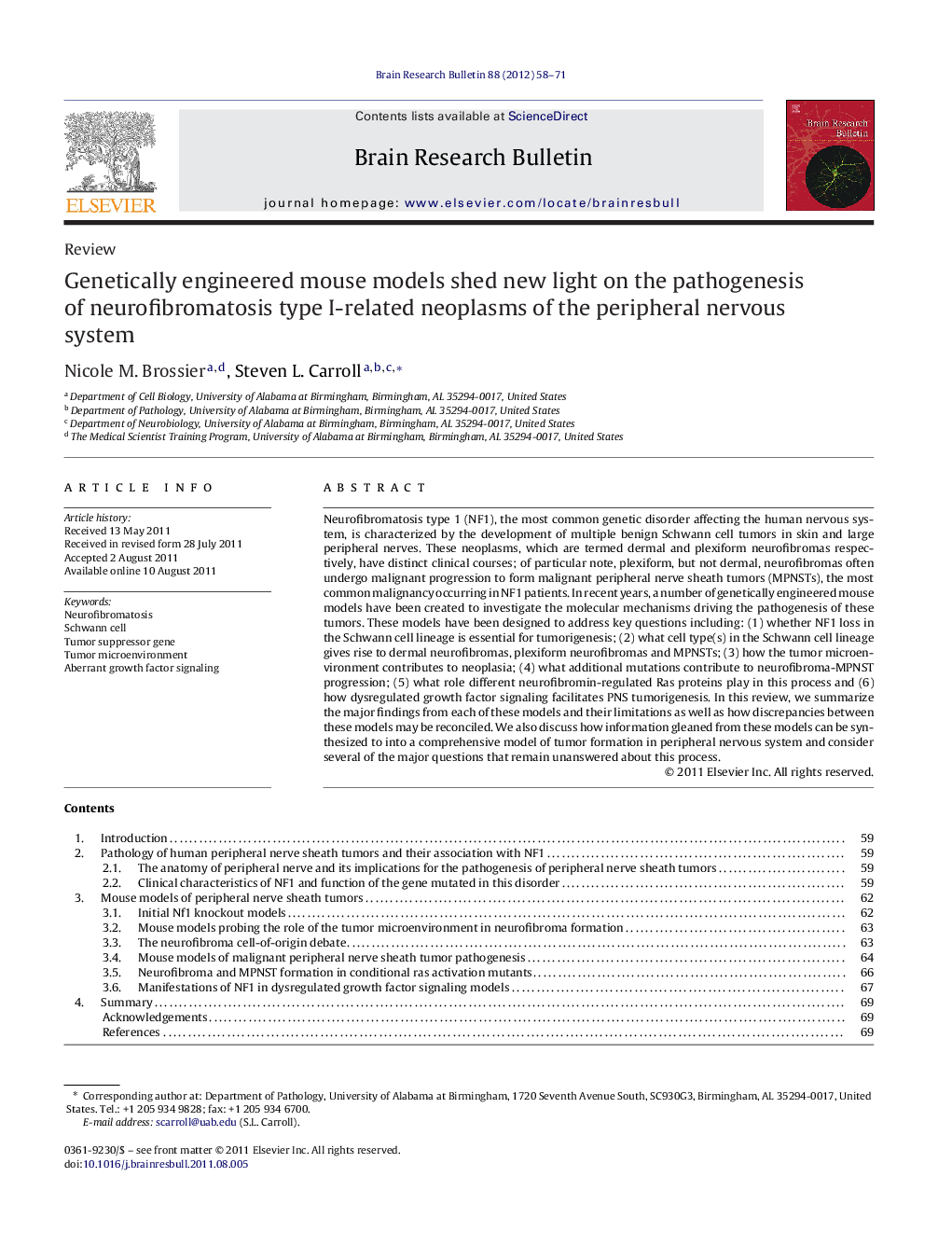| کد مقاله | کد نشریه | سال انتشار | مقاله انگلیسی | نسخه تمام متن |
|---|---|---|---|---|
| 4319106 | 1290795 | 2012 | 14 صفحه PDF | دانلود رایگان |

Neurofibromatosis type 1 (NF1), the most common genetic disorder affecting the human nervous system, is characterized by the development of multiple benign Schwann cell tumors in skin and large peripheral nerves. These neoplasms, which are termed dermal and plexiform neurofibromas respectively, have distinct clinical courses; of particular note, plexiform, but not dermal, neurofibromas often undergo malignant progression to form malignant peripheral nerve sheath tumors (MPNSTs), the most common malignancy occurring in NF1 patients. In recent years, a number of genetically engineered mouse models have been created to investigate the molecular mechanisms driving the pathogenesis of these tumors. These models have been designed to address key questions including: (1) whether NF1 loss in the Schwann cell lineage is essential for tumorigenesis; (2) what cell type(s) in the Schwann cell lineage gives rise to dermal neurofibromas, plexiform neurofibromas and MPNSTs; (3) how the tumor microenvironment contributes to neoplasia; (4) what additional mutations contribute to neurofibroma-MPNST progression; (5) what role different neurofibromin-regulated Ras proteins play in this process and (6) how dysregulated growth factor signaling facilitates PNS tumorigenesis. In this review, we summarize the major findings from each of these models and their limitations as well as how discrepancies between these models may be reconciled. We also discuss how information gleaned from these models can be synthesized to into a comprehensive model of tumor formation in peripheral nervous system and consider several of the major questions that remain unanswered about this process.
► Evidence that NF1 loss in the Schwann cell lineage is essential for tumorigenesis.
► What cell type in the Schwann cell lineage gives rise to neurofibromas and MPNSTs.
► How the tumor microenvironment contributes to neoplasia.
► What additional mutations contribute to neurofibroma-MPNST progression.
► How dysregulated growth factor signaling facilitates PNS tumorigenesis.
Journal: Brain Research Bulletin - Volume 88, Issue 1, 1 May 2012, Pages 58–71